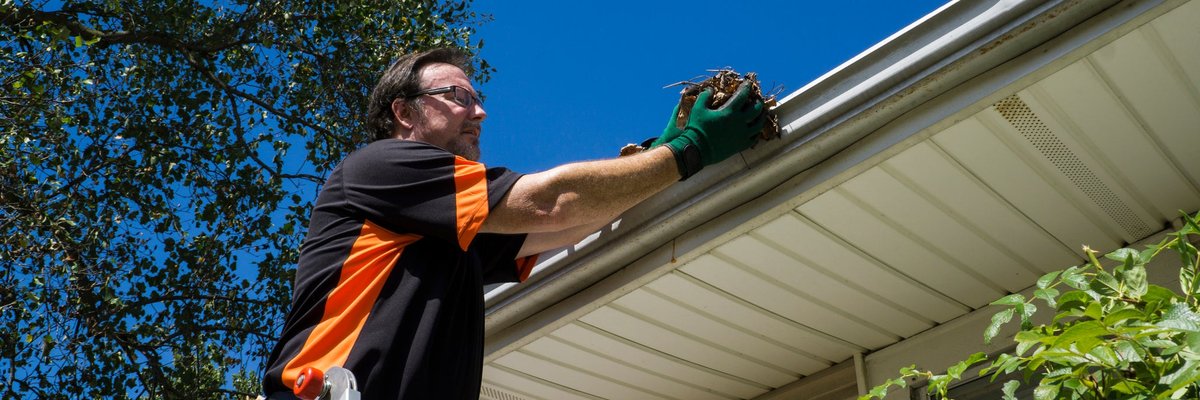Home Maintenance Costs Are at All-Time Highs. Here Are 6 Ways to Save Money
KEY POINTS
- Thumbtack reported that the cost of maintaining a single-family home rose 8.5% over a year; for townhomes and condos, costs rose 5.36% and 5.07%, respectively.
- Keep your eyes open for any small problems that could turn into big, expensive ones.
- Make it a point to save for maintenance costs (at least 1% of your home's value every year is a good rule of thumb) and if you feel confident enough to DIY some repairs and maintenance, go for it.
I've been a renter for the majority of my adult life, and although my misadventure with homeownership in my 20s ended poorly, I got extremely lucky that I didn't need to shell out much money for home maintenance when I owned. Now that I'm preparing to buy again next year, the costs I'll face as a homeowner give me pause. As a renter, I've always been able to call my landlord if the hot water heater broke, if I had a wasp problem, or if there was a leak under the kitchen sink. Soon, problems like that will fall squarely under the jurisdiction of my checking account.
Unfortunately, home maintenance costs have reached all-time highs as of late. As reported by the Thumbtack blog, the average annual cost to maintain a single-family house rose by 8.5% between Q2 2022 and Q2 2023. Plus, the costs to maintain a townhouse and a condo over that same period rose 5.36% and 5.07%, respectively. No matter how you slice it, the privilege of being a homeowner comes with higher costs. Let's consider a few ways you might spend less -- or at least save more strategically.
1. Leave yourself a cushion when you buy
It's often recommended that you make a 20% down payment when you take out a mortgage loan. This is so you can avoid having to pay for private mortgage insurance (PMI), which protects your mortgage lender should you be unable to pay your loan. However, I plan to put just 10% down when I buy my home.
This is a calculated decision on my part -- I don't want to wipe out my savings entirely when I buy. The odds are excellent that I will be buying an older home, and if life has taught me anything, it's that I'm likely to encounter a necessary home repair before the ink is dry on my mortgage.
2. Stay on top of preventive maintenance
An ounce of prevention is worth a pound of cure, or so the old saying goes. To that end, try to be aware of how often certain tasks need to happen around your house.
For example, it's much easier to clean your gutters before winter hits, snow falls, and water ends up freezing and creating ice dams that have the potential to cause expensive roof damage.
3. Make regular contributions to a home maintenance fund
Experts recommend saving in the neighborhood of 1% of your home's value every year to cover maintenance costs, but you might want to save more. Depending on where you live, this could represent substantial money.
To make it easier on yourself, arrange for automatic transfers from your checking to your savings account. I recommend treating saving for maintenance as a necessary bill and paying yourself first.
4. Get multiple quotes for work
Unless you are in an emergency situation, you can likely talk to more than one contractor or repair person about a home repair.
Getting multiple price quotes can give you a fairly good idea of the average cost of a certain type of work in your area. It can also give you the chance to find the best price (and the best timeline -- contractors book up fast) for what you need done.
5. Consider a home warranty
Home warranties have a mixed reputation. They do not fulfill the same function as homeowners insurance, and instead cover service calls, repairs, and replacements of appliances and home systems, like your HVAC.
One of my colleagues here at Motley Fool Money swears by home warranties, and if you're buying an older home (like I will be), it might be a good idea to explore your warranty options. Just be sure to read the fine print and make sure you'll have the coverage you want and need so there are no expensive surprises later.
6. DIY -- within reason
Some tasks at home should be handled by a professional. This includes a lot of electrical work, heavy-duty pest control, and possibly tasks like tree trimming and gutter cleaning, if you have a multi-story home and aren't 100% comfortable on a ladder.
One of the wonderful things about living in the here and now is how many explainer and DIY videos you can find on YouTube. But it's important to remember that unless you feel very confident in your abilities, it'll end up costing you more to hire a professional after you've botched a home repair. And your safety is the most important thing.
If you're buying a home or are already a homeowner, don't kid yourself -- owning a house isn't cheap. But if you put money aside strategically, stay aware of potential issues, and shop around for repair and maintenance work, you might come out ahead financially.
Our Research Expert
We're firm believers in the Golden Rule, which is why editorial opinions are ours alone and have not been previously reviewed, approved, or endorsed by included advertisers. Motley Fool Money does not cover all offers on the market. Motley Fool Money is 100% owned and operated by The Motley Fool. Our knowledgeable team of personal finance editors and analysts are employed by The Motley Fool and held to the same set of publishing standards and editorial integrity while maintaining professional separation from the analysts and editors on other Motley Fool brands. Terms may apply to offers listed on this page.



